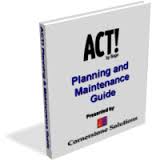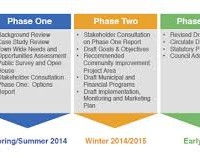What is the Planning Act? ONTARIO



Citizens’ Guide 1 – The Planning Act PDF (145K)
What is the Planning Act
The Planning Act sets out the ground rules for land use planning in Ontario and describes how land uses may be controlled, and who may control them.
The Act is legislation passed by your elected provincial representatives to:
- promote sustainable economic development in a healthy natural environment within a provincial policy framework
- provide for a land use planning system led by provincial policy
- integrate matters of provincial interest into provincial and municipal planning decisions by requiring that all decisions shall be consistent with the Provincial Policy Statement when decision-makers exercise planning authority or provide advice on planning matters
- provide for planning processes that are fair by making them open, accessible, timely and efficient
- encourage co-operation and coordination among various interests
- recognize the decision-making authority and accountability of municipal councils in planning.
The Act provides the basis for:
- considering provincial interests, such as protecting and managing our natural resources
- establishing local planning administration, including planning boards in northern Ontario (See Northern Ontario, No. 7 in the series.)
- preparing official plans and planning policies that will guide future development
- a variety of tools that municipalities can use to facilitate planning for the future
- establishing a streamlined planning process which emphasizes local autonomy in decision-making
- exempting official plans and official plan amendments from approval (See Official Plans, No. 2 in the series.)
- regulating and controlling land uses through zoning by-laws and minor variances (See Zoning By-Laws, No. 3 in the series.)
- dividing land into separate lots for sale or development through a plan of subdivision or a land severance (See Subdivisions and Land Severances, Nos. 4 & 5 in the series.)
- ensuring the rights of local citizens to be notified about planning proposals, to give their views to their municipal council and, where permitted, to appeal decisions to the Ontario Municipal Board(OMB) or in some cases, a municipal Local Appeal Body (LAB) where a LAB has been established by a municipality. The OMB and LAB are independent administrative tribunals responsible for hearing appeals and deciding on a variety of contentious municipal matters (See the Ontario Municipal BoardNo. 6 in the series.)
- ensuring that approval authorities or the Ontario Municipal Board have regard to decisions made by municipal councils and approval authorities when dealing with the same planning matters
- allowing provincial appeals only through the Ministry of Municipal Affairs and Housing (See The Plan Review and Approval Process, No. 9 in the series).
What is the province’s role?
The province:
- issues provincial policy statements under the Planning Act
- prepares provincial plans e.g. Greenbelt Plan and Growth Plan for the Greater Golden Horseshoe, 2006
- promotes provincial interests, such as protecting farmland, natural resources and the environment, as well as promoting development that is designed to be sustainable, supportive of public transit and oriented to pedestrians
- provides one-window planning service to municipalities through the Ministry of Municipal Affairs and Housing, the primary provincial contact for advice and information on land use planning issues
- gives advice to municipalities and the public on land use planning issues
- administers local planning controls and gives approval where required.
What is the role of municipalities?
The municipality:
- makes local planning decisions that will determine the future of communities
- prepares planning documents, such as:
an official plan, which sets out the municipality’s general planning goals and policies that will guide future land use
zoning by-laws, which set the rules and regulations that control development as it occurs. The Planning Act also gives planning boards in northern Ontario the power to adopt official plans and pass zoning by-laws for unorganized territory within their planning areas
- ensures planning decisions and planning documents are consistent with the Provincial Policy Statement and conform or do not conflict with provincial plans.
Upper-tier municipalities (i.e. counties and regional/district municipalities) as well as planning boards deal with broad land use planning issues that concern more than one local municipality. Some of these upper-tier municipalities have their own official plans and have the power to approve local official plans, in place of the Minister of Municipal Affairs and Housing.
Some of these upper-tier municipalities are also the approval authority for plans of subdivision. In some areas of the province, municipalities in one or more counties, with the approval of the Minister, may constitute a municipal planning authority to do joint planning to address common issues on managing growth and providing services. A municipal planning authority would have the same power as the council to prepare an official plan for the defined municipal planning area. It may also be given the power to approve plans of subdivision and consents as well as local official plans and amendments.
Contact your municipal clerk’s office or planning department to determine the approval authority for official plans and plans of subdivision in your area.

What is the Provincial Policy Statement?
Under the Planning Act, the Minister of Municipal Affairs and Housing may, from time to time, issue provincial statements on matters related to land use planning that are of provincial interest.
The Provincial Policy Statement, 2005 (PPS, 2005) contains clear, overall policy directions on matters of provincial interest related to land use planning and development. The Provincial Policy Statement, 2005 may be obtained through the government offices listed at the end of this guide, or by visiting the Ministry website at: ontario.ca/mah.
The Provincial Policy Statement, 2005 promotes a policy-led planning system that recognizes there are complex inter-relationships among and between environmental, economic and social factors in land use planning. Below is a description of three major PPS, 2005 policy sections:
Building Strong Communities
The Provincial Policy Statement, 2005 provides policy direction that will help build strong communities in Ontario. For example, to help achieve strong communities where people would like to live, work and play, the Provincial Policy Statement, 2005, provides policies for:
- the wise management of land to meet future needs
- the provision of a range of housing types, including affordable housing, and densities to meet the needs of current and future residents
- the protection of employment areas to promote economic development and competitiveness.
Wise Management of Resources
The Provincial Policy Statement, 2005 includes strong policy direction to protect the province’s natural heritage, water, agricultural, mineral, and cultural heritage and archaeological resources. The protection of these important resources will help ensure Ontario’s long-term prosperity, environmental health and social well-being.
Protecting Public Health and Safety
The Provincial Policy Statement, 2005 protects Ontario communities through policies directing development away from areas of natural or human-made hazards where there is an unacceptable risk to public health or safety, or property damage.
When decision-makers exercise any authority that affects planning matters, the Planning Act requires that they “shall be consistent with” the Provincial Policy Statement. This means that a decision-maker is obliged to ensure that the policies in the Provincial Policy Statement are applied as an essential part of the land use planning decision-making process. Decision makers implement the Provincial Policy Statement in the context of other planning objectives and local circumstances.
How does the Planning Act work?
Municipal councils, landowners, developers, planners and the public play an important role in shaping a community. Community planning is aimed at identifying common community goals and balancing competing interests of the various parties.
The central activity in the planning of a community is the making of an official plan, a document which guides future development of an area in the best interest of the community as a whole.
Your municipal council must give you as much information as possible when preparing its official plan and, in some cases, must hold a public open house to let the public review, ask questions and provide suggestions or comments about the plan. Before it adopts the plan, council must hold at least one public meeting where you can formally give your opinion. It is up to council to decide the best way to let people know about the meeting, but notice must be given at least 20 days ahead of time, either through local newspapers or by mail and posted notice.
The Act encourages early upfront involvement and the use of mediation techniques to resolve conflict. Make sure you make your views known early in the planning process. If you don’t, you are not eligible to appeal certain types of planning decisions and you may not be eligible to be a party to appeals of certain types of planning decisions.
The Planning Act contains similar procedures for changes to the official plan, for zoning by-law amendments and approval of plans of subdivision.
How can you get involved?
You can be an important part of the land use planning process by keeping informed about what’s going on in your community and by participating in public meetings.
Your input will help the municipal council make better decisions that affect your future. So, if you are concerned about all or any part of a planning proposal or policy change, you should:
- find out as much as possible about the proposal
- think about how it will affect you
- talk to your neighbours
- go to public meetings, open houses and information sessions and let council know what you think
- write to your council member or the municipal officials about your views
- work with council and municipal staff to resolve your concerns.
Finally, if you are not happy with council’s decisions on planning issues, in many instances you may appeal to the Ontario Municipal Board for a public hearing. To ensure that your appeal rights are protected, it is important that you make your views known during the municipal decision-making process.
For more information about your rights to appeal, see the Ontario Municipal Board,No. 6 in the series, and the guides that deal with specific types of planning documents.

How can you find out more?
For more information about land use planning in your community contact your municipal clerk or planning department. For more information about land use planning in Ontario, or how to obtain copies of Citizens’ Guides contact your nearest Municipal Services Office (MSO).
For More Information
Ministry of Municipal Affairs and Housing
Provincial Planning Policy Branch (416) 585-6014
A hard copy of this publication can be ordered:
Online at serviceontario.ca/publications
By phone through the ServiceOntario Contact Centre
Monday to Friday, 8:30 AM to 5:00 PM
• 416-326-5300
• 416-325-3408 (TTY)
• 1-800-668-9938 Toll-free across Canada
• 1-800-268-7095 TTY Toll-free across Ontario
Produced by the Ministry of Municipal Affairs and Housing, Provincial Planning Policy Branch
ISBN 978-1-4249-7128-2 (PDF)
ISBN 978-1-4249-7126-8 (Print)
ISBN 978-1-4249-7127-5 (HTML)




